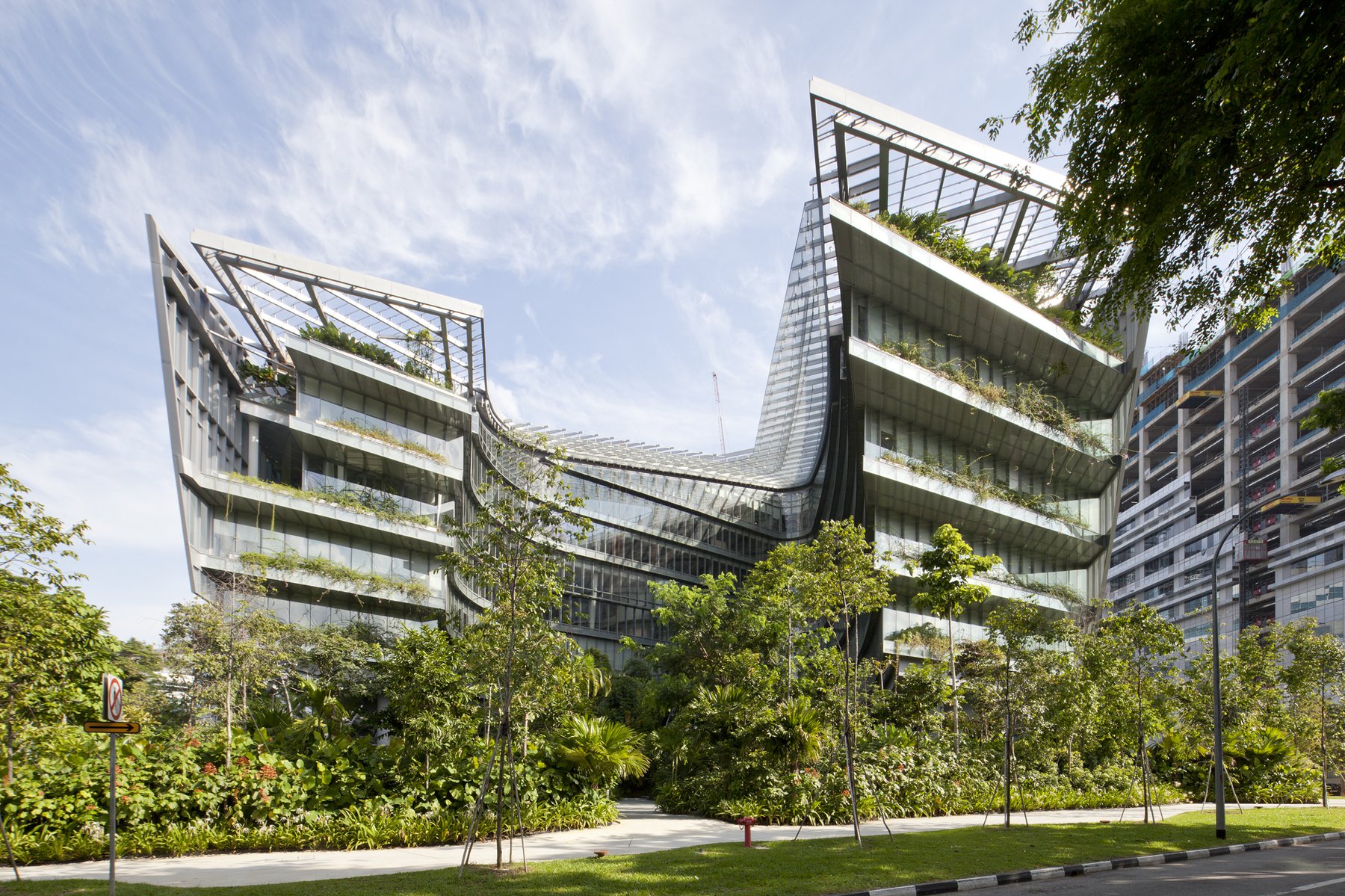
Technology
Green Design Architecture - Fool's Dream or a Necessity?
June 08, 2021
With heightened awareness of environmental issues, organisations are applying new, sustainable approaches in their everyday decision-making process -- including in the area of architecture and design. With the new green approach, architecture is no longer just about building structures but now becomes an opportunity to apply sustainable practices.
What is Green Architecture?
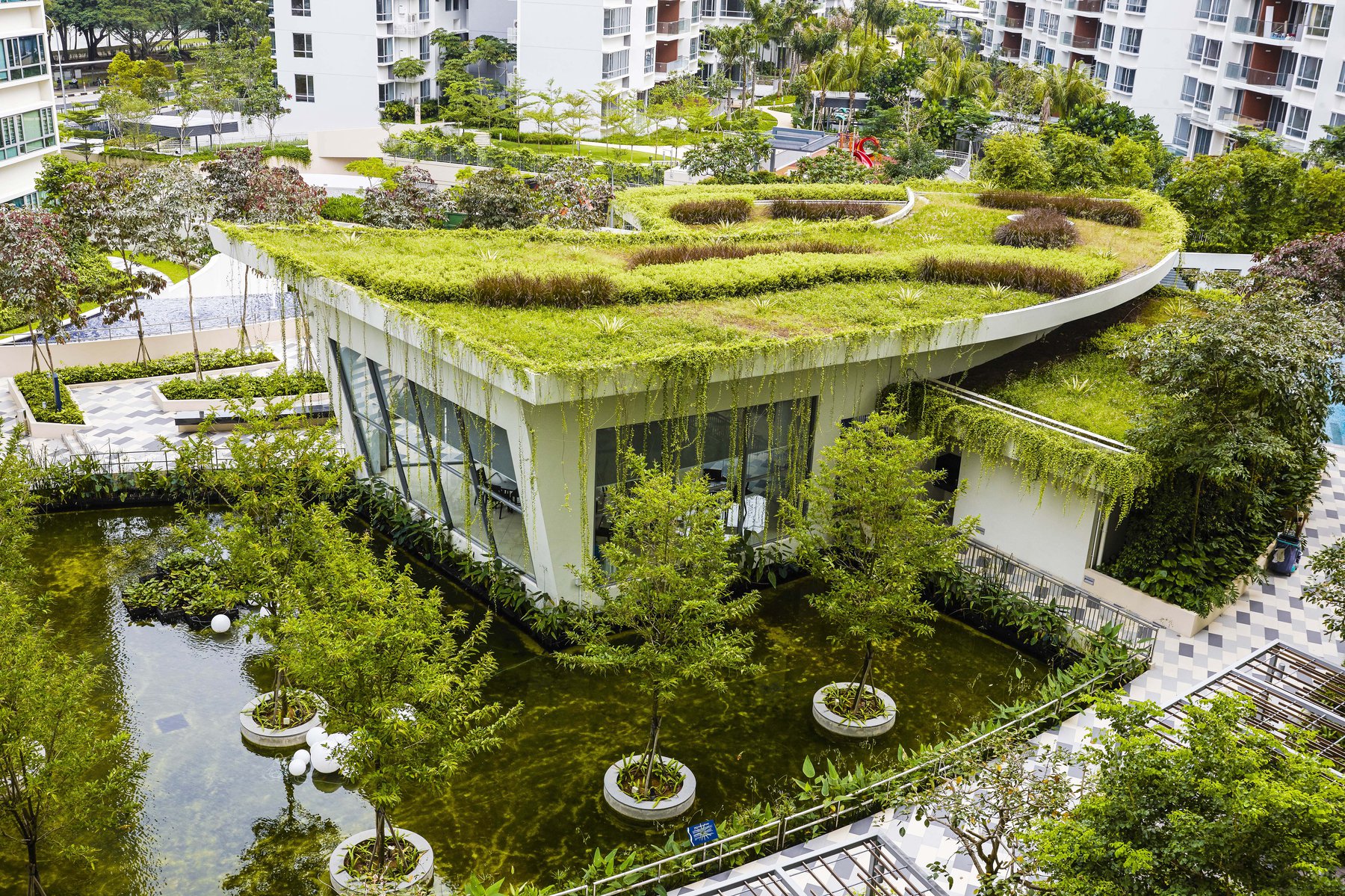
Waterfront Waves, Singapore by Ong&Ong.
Green architecture, also known as green design, is a method of construction that minimises the adverse effects that construction poses to human health and the environment by using environmentally sustainable building materials and techniques.
Green Building Objectives
Green architecture promotes renewable energy sources, energy efficiency and the usage of safe (non-toxic) construction materials within the design of a structure. The end goal of green architecture is to minimise or eliminate adverse environmental effects.
The components of a green building include:
• Energy efficiency and the use of renewable energy, i.e. solar and wind-powered electricity
• Water efficiency
• Environmentally-friendly building materials and specifications
• Overall waste reduction
• Toxic waste reduction
• Indoor air quality
• Smart growth and sustainable development
The components of a green building include:
• Energy efficiency and the use of renewable energy, i.e. solar and wind-powered electricity
• Water efficiency
• Environmentally-friendly building materials and specifications
• Overall waste reduction
• Toxic waste reduction
• Indoor air quality
• Smart growth and sustainable development
Benefits of Green Architecture
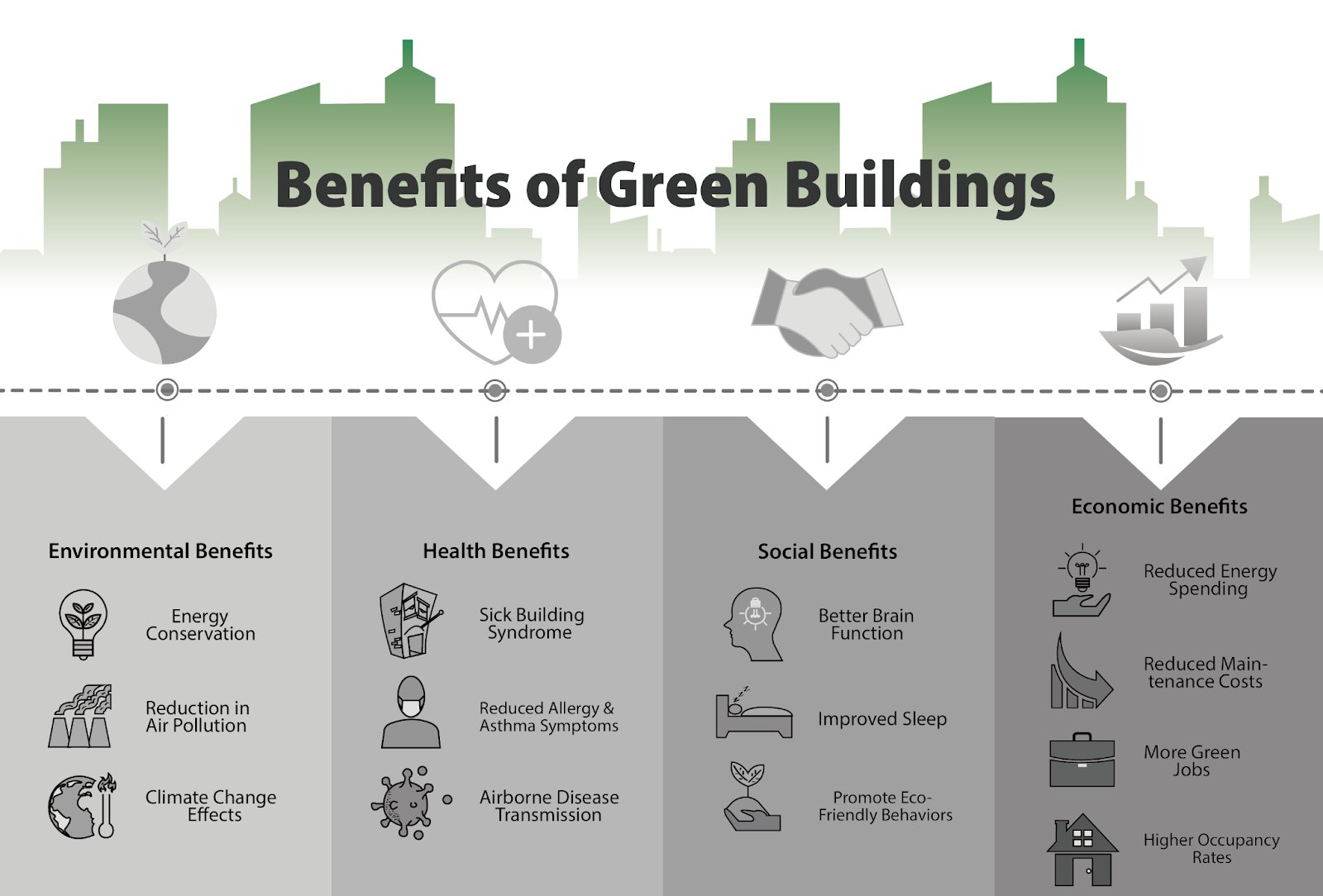
While the initial cost of designing and developing a green building may not be cheap, studies have shown that green buildings may eventually garner higher valuations in the real estate market.
Energy-efficient design need not be complex. There are numerous opportunities to integrate sustainable practices and designs into any building. The Centre for Sustainable Energy Technologies (CSET) in Ningbo, China, for example, employs unique under-floor heating panels that use geothermal energy to heat and cool the building interiors according to the season.
For developments in humid climates, natural ventilation and passive cooling are the most efficient solutions to enhance thermal comfort. In an article titled Natural Ventilation for Passive Cooling by Means of Optimized Control Logics by Rinaldi et al., according to the ASHRAE 55 thermal comfort theory, the optimised control logics in natural ventilation results in a reduction of overheating and discomfort, as compared to ventilation only for indoor air quality at fixed hours.
It is also found that when a passive cooling system is combined with active cooling, energy demand for cooling is reduced. The findings show how the proposed optimised control logics increase the ability of natural ventilation to boost building energy and thermal performance by combining/replacing traditional efficiency strategies.
Energy-efficient design need not be complex. There are numerous opportunities to integrate sustainable practices and designs into any building. The Centre for Sustainable Energy Technologies (CSET) in Ningbo, China, for example, employs unique under-floor heating panels that use geothermal energy to heat and cool the building interiors according to the season.
For developments in humid climates, natural ventilation and passive cooling are the most efficient solutions to enhance thermal comfort. In an article titled Natural Ventilation for Passive Cooling by Means of Optimized Control Logics by Rinaldi et al., according to the ASHRAE 55 thermal comfort theory, the optimised control logics in natural ventilation results in a reduction of overheating and discomfort, as compared to ventilation only for indoor air quality at fixed hours.
It is also found that when a passive cooling system is combined with active cooling, energy demand for cooling is reduced. The findings show how the proposed optimised control logics increase the ability of natural ventilation to boost building energy and thermal performance by combining/replacing traditional efficiency strategies.
Materials in Green Architecture
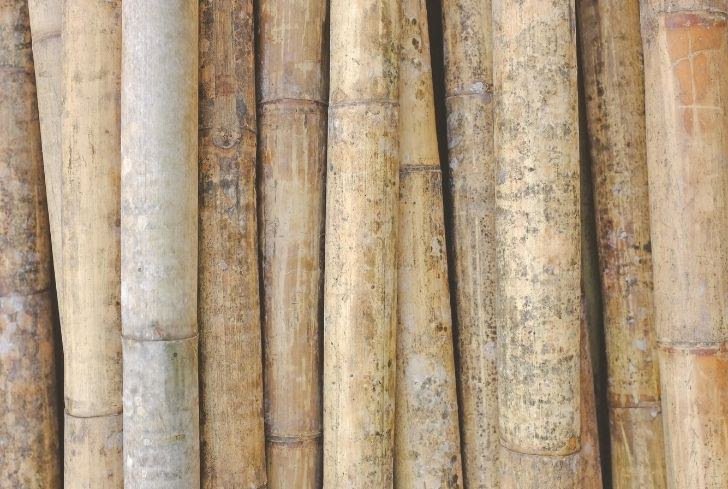
Guadua bamboo
Green architecture further promotes sustainability when it uses materials with energy-efficient features and benefits. This includes recycled materials, for instance, insulation created from newspapers and used cardboard. Another one of the most effective ways to achieve environmentally-friendly construction materials is to partially replace energy-intensive cement with reusable materials. For example, cement can be replaced by Fly Ash, Silica Fume, and Wood Ash, among other materials.
Renewable materials like FSC-certified wood and solar tiles also contribute to lower carbon emissions because they are durable, locally available, non-toxic, and have low levels of volatile organic compounds (VOC).
Another eco-friendly building construction material that is gaining popularity is green concrete. Green concrete is made from the waste or residual materials of various industrial processes. Compared to regular concrete, green concrete is cheaper, requires less energy to produce and lasts longer as a building material.
Renewable materials like FSC-certified wood and solar tiles also contribute to lower carbon emissions because they are durable, locally available, non-toxic, and have low levels of volatile organic compounds (VOC).
Another eco-friendly building construction material that is gaining popularity is green concrete. Green concrete is made from the waste or residual materials of various industrial processes. Compared to regular concrete, green concrete is cheaper, requires less energy to produce and lasts longer as a building material.
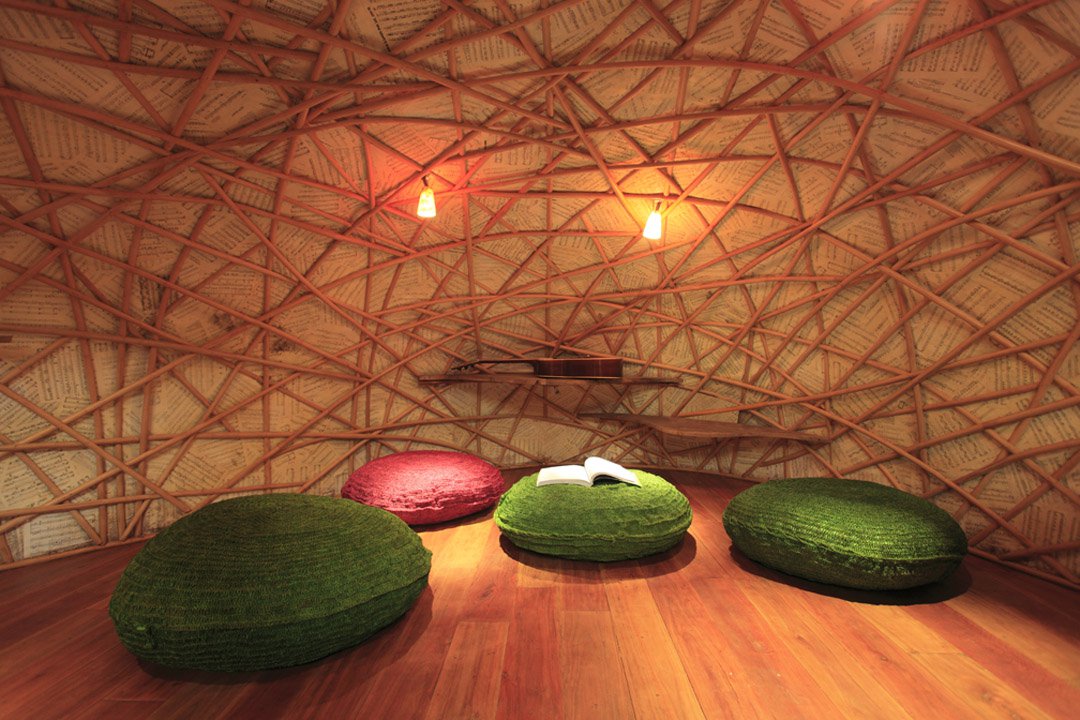
The interior of the Ecological Children Activity and Education Centre, Ko Kut, Thailand
When working with green concrete, the ultimate goal is to reduce the use of natural resources while increasing the incorporation of recyclable materials into the built environment. If one is familiar with ‘the poor man’s timber’, otherwise known as bamboo, one will realise how abundant and renewable a resource it is in this part of the world. In the past, poorer communities in developing Southeast Asian countries would use bamboo to build temporary houses. Today, architects across Southeast Asia are deliberately choosing bamboo as a building material in modern, contemporary buildings like the Ecological Children Activity and Education Center in Thailand.
Indoor Environment Quality
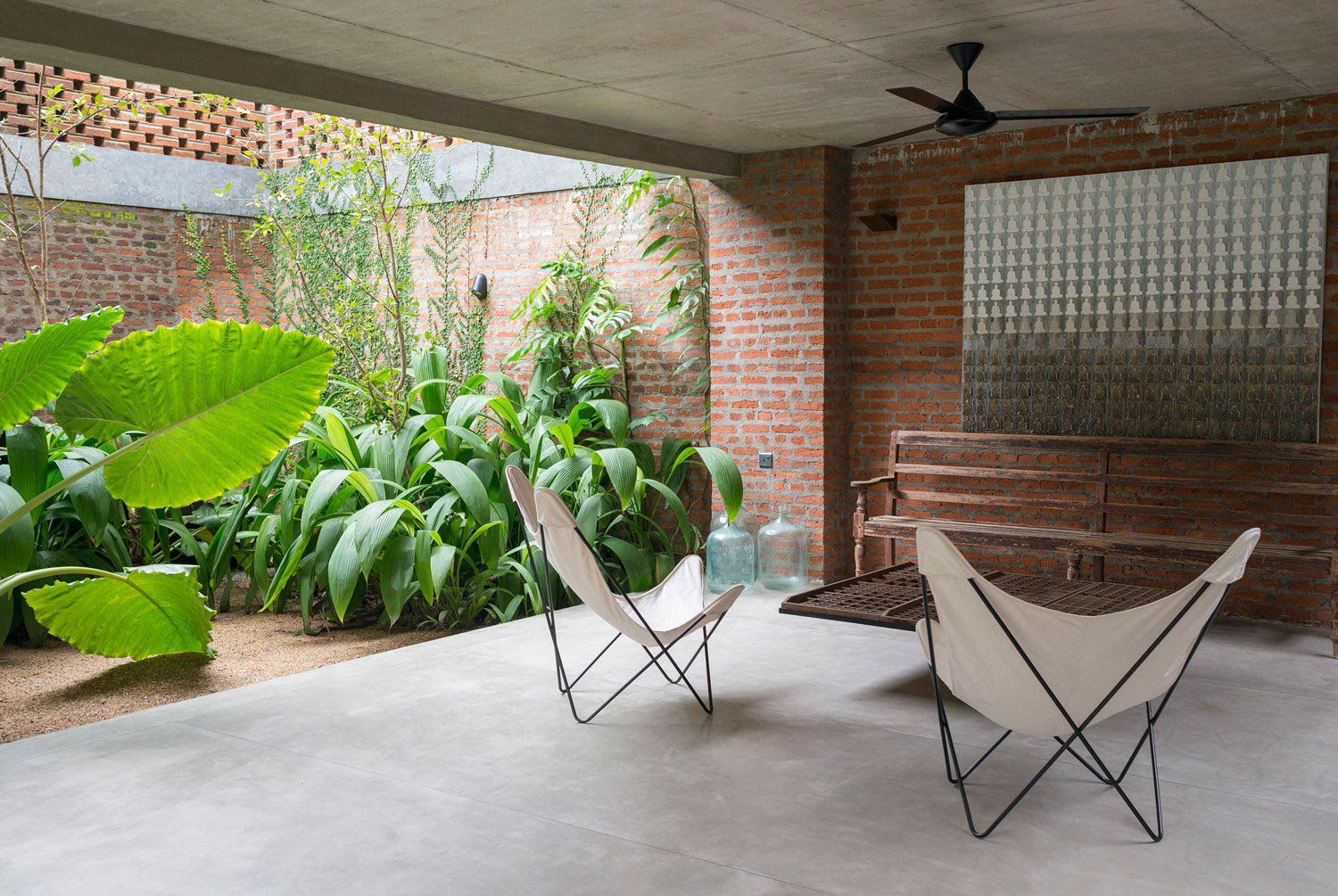
Lush greenery surrounding the Artists Retreat in Sri Lanka
Indoor environmental quality refers to creating a comfortable indoor atmosphere through natural temperature regulation, adequate ventilation, and the use of non-toxic or compound gas-emitting materials. The 3M headquarters in Italy is a clear example of this, as it employs interior signs, lighting, and colours to construct a friendly atmosphere and conducive to the internal synergy between employees.
Another example is the Artists Retreat in Sri Lanka, which features a rooftop pond with water lilies and freshwater fish to keep the spaces underneath cool. A perforated brickwork screen creates air voids in the facade, allowing for a cooler microclimate and natural light to filter in.
Another example is the Artists Retreat in Sri Lanka, which features a rooftop pond with water lilies and freshwater fish to keep the spaces underneath cool. A perforated brickwork screen creates air voids in the facade, allowing for a cooler microclimate and natural light to filter in.
Design for Manufacturing and Assembly (DfMA)
Design for Manufacturing and Assembly (DfMA) is an engineering methodology that focuses on reducing time-to-market and total production costs by prioritising both the ease of manufacture for the product’s parts and the simplified assembly of those parts into the final product – all during the early design phases of the product life cycle.
In the past, DfMA used to be two separate methodologies, namely Design for Manufacturing (DFM) and Design for Assembly (DFA). To reduce overall production time and costs for product parts, DFM was concerned with choosing cost-effective raw materials and attempted to mitigate the complexity of the manufacturing processes during the product design process. Similarly, DFA focused on its own strategy to decrease the number of individual components, assembly phases and reduce build-quality variability to lower the product's assembly time, costs, and complexities.
DfMA principles are used in green architecture design to increase the quality, sustainability, and cost-efficiency of the construction process. In a case study of a commercial building in Wuhan, China, the benefits of a DfMA-oriented curtain wall system (CWS) design included decreased material costs and waste, reduced on-site assembly time, and improved quality and aesthetic performance of the CWS.
In the past, DfMA used to be two separate methodologies, namely Design for Manufacturing (DFM) and Design for Assembly (DFA). To reduce overall production time and costs for product parts, DFM was concerned with choosing cost-effective raw materials and attempted to mitigate the complexity of the manufacturing processes during the product design process. Similarly, DFA focused on its own strategy to decrease the number of individual components, assembly phases and reduce build-quality variability to lower the product's assembly time, costs, and complexities.
DfMA principles are used in green architecture design to increase the quality, sustainability, and cost-efficiency of the construction process. In a case study of a commercial building in Wuhan, China, the benefits of a DfMA-oriented curtain wall system (CWS) design included decreased material costs and waste, reduced on-site assembly time, and improved quality and aesthetic performance of the CWS.
A New Normal for Built-Environment Design
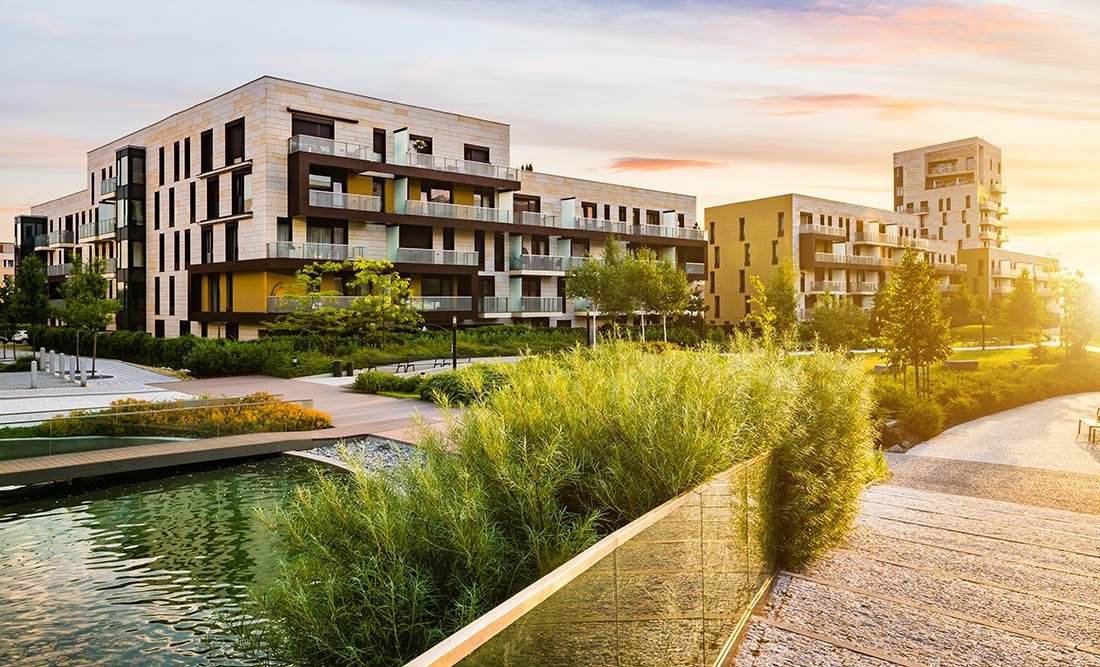
Incorporating the elements needed in green architecture and design may seem like a tall order at first. A lot of meticulous planning must be done to ensure that a green building will serve its purpose as an energy-efficient and sustainable entity that will reduce its negative impact on the environment and have a lower long-term maintenance cost.
Nonetheless, the challenge of meeting the standards of green architecture will not be in vain. Developers that advocate green architecture will spark a new movement. Soon, green architecture will become the new normal for architecture and design.
Nonetheless, the challenge of meeting the standards of green architecture will not be in vain. Developers that advocate green architecture will spark a new movement. Soon, green architecture will become the new normal for architecture and design.